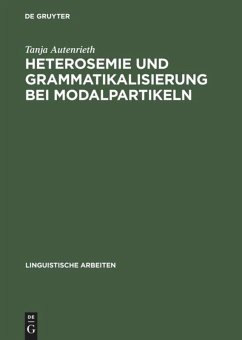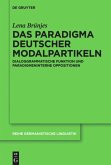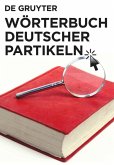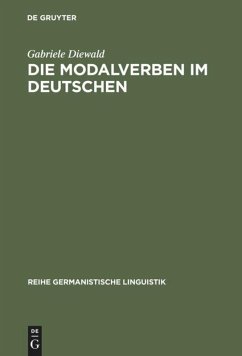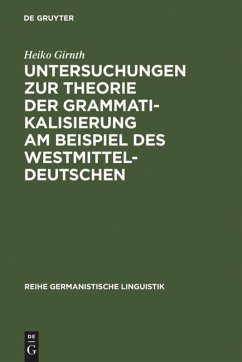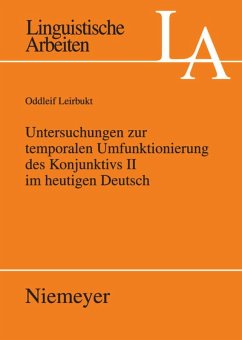Modal particles and their same-form counterparts in other parts of speech display heterosemic relations (cross-category semantic relations). Comparison of the lexemes studied shows that there are class-specific grammaticalization patterns for modal particles. In the framework of a modular-oriented theory of meaning, the combination of synchronic and diachronic analysis produces minimalist meaning postulates for non-propositional usage. The Old/Middle/early New High German e(cher)t is a hitherto undiscovered modal particle that went out of currency in the early stages of New High German.
Auf der Basis umfangreicher synchroner und diachroner Untersuchungen werden Grammatikalisierungsmuster für Modalpartikeln sowie semantische Beziehungen zwischen Modalpartikeln und deren gleichlautenden Gegenstücken in anderen Wortarten herausgearbeitet. Die Arbeit bewegt sich im Rahmen einer modularen Bedeutungstheorie und liefert unter Voraussetzung von Heterosemie und klassenspezifischer Grammatikalisierung minimalistische Bedeutungspostulate für den nicht-propositionalen Gebrauch.
Nicht alle untersuchten Lexeme können der Klasse der Modalpartikeln zugeordnet werden. Sie befinden sich stattdessen zum Teil in einem kategorial unspezifischen Zustand, der auf einen nicht abgeschlossenen Grammatikalisierungsprozeß zurückgeführt werden kann.
Als Ergebnis der korpusbasierten diachronen Untersuchung zeigt sich unter anderem, daß mit ahd./mhd./fnhd. e(cher)t eine bisher unentdeckte, im Verlauf des Frühneuhochdeutschen untergegangene Modalpartikel vorliegt.
Auf der Basis umfangreicher synchroner und diachroner Untersuchungen werden Grammatikalisierungsmuster für Modalpartikeln sowie semantische Beziehungen zwischen Modalpartikeln und deren gleichlautenden Gegenstücken in anderen Wortarten herausgearbeitet. Die Arbeit bewegt sich im Rahmen einer modularen Bedeutungstheorie und liefert unter Voraussetzung von Heterosemie und klassenspezifischer Grammatikalisierung minimalistische Bedeutungspostulate für den nicht-propositionalen Gebrauch.
Nicht alle untersuchten Lexeme können der Klasse der Modalpartikeln zugeordnet werden. Sie befinden sich stattdessen zum Teil in einem kategorial unspezifischen Zustand, der auf einen nicht abgeschlossenen Grammatikalisierungsprozeß zurückgeführt werden kann.
Als Ergebnis der korpusbasierten diachronen Untersuchung zeigt sich unter anderem, daß mit ahd./mhd./fnhd. e(cher)t eine bisher unentdeckte, im Verlauf des Frühneuhochdeutschen untergegangene Modalpartikel vorliegt.

